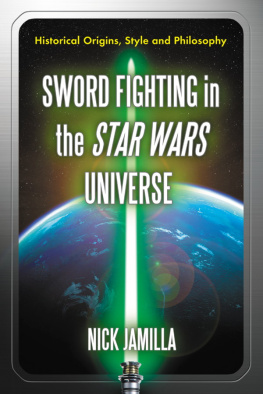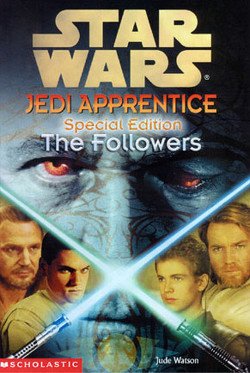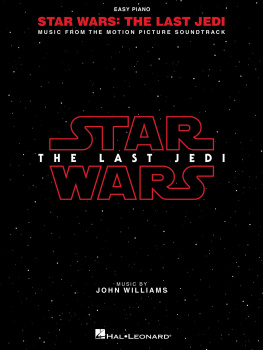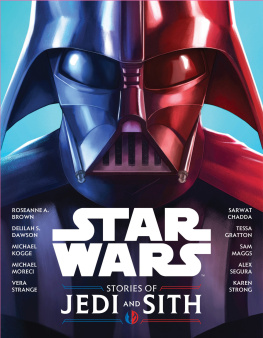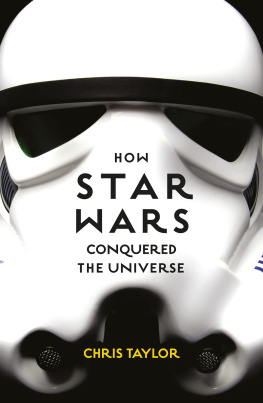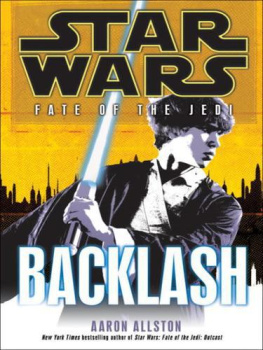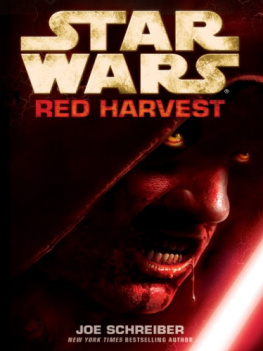
Table of Contents
This book is a revised and expanded version of Shimmering Sword: Samurai, Western and Star Wars Sword Fighting (NBK, 2002).
LIBRARY OF CONGRESS CATALOGUING-IN-PUBLICATION DATA
Jamilla, Nick.
Sword fighting in the Star wars universe : historical origins, style and philosophy / Nick Jamilla.
p. cm.
Includes bibliographical references and index.
ISBN 978-0-7864-3461-9
1. Star Wars films. 2. Swordplay in motion pictures. I. Title.
PN1995.9.S695J36 2008
791.43'75dc22 2008023053
British Library cataloguing data are available
2008 Nick Jamilla. All rights reserved
No part of this book may be reproduced or transmitted in any form or by any means, electronic or mechanical, including photocopying or recording, or by any information storage and retrieval system, without permission in writing from the publisher.
Cover images 2008 Shutterstock
McFarland & Company, Inc., Publishers
Box 611, Jefferson, North Carolina 28640
www.mcfarlandpub.com
For Brian Willis and my parents
Preface
In anticipation of the first prequel movie in 1999, I wrote three articles on Jedi sword fighting for EchoStation.com. These articles were so well received that I decided to seek a wider audience with which to share my knowledge of and experience with Western fencing and Japanese swordsmanship. Buoyed by so many gracious e-mails, I composed several query letters and soon had invitations to do bookstore talks/demonstrations and an offer to give a sword fight demonstration for the Washington, D.C., Episode I charity premiere that took place several days before the general release of the movie. The enthusiasm of my audience was so great that I decided to continue the dialog by writing a book titled Shimmering Sword that answers in part or in whole many of the questions that were asked of me during my public appearances. The book was quite successful but it was incomplete in that it only covered material from the first prequel movieThe Phantom Menace. Now that the saga is complete, this revised and expanded book looks at the Jedi Knights and their lightsaber from the perspective of all six episodes of the Star Wars saga.
It is against this background that I explore the world of the Jedi Knight, which finds its basis in the reality of human history. This book discusses swordsmanship as a way to better understand the Jedi Knights, an artistic expression of our own real-world existence. It focuses on the human activity surrounding the traditional weapon of the sword, which forces men to confront each other head to head. It is an exploration of the cultural conditions of men and women who find that there may be no choice but to resort to the use of force. The premise of this book is not Could it happen? but How did it happen? While it may seem a blatant form of artifice, all fiction asks the audience to suspend reality for a time. Whether that suspension of reality makes an impact on us is often a function of how transferable the fiction is to the real world. The more real it seems, the more enjoyable and profound the experience. It is therefore incumbent upon me to examine the historical precedents that have informed the development of the lightsaber in the Star Wars universe so that we might better understand ourselves.
Much of this books content refers to historical examples as the basis of Star Wars lightsaber fencing, but my own history also affects the views and perspectives of swordsmanship, which do not, by any significant measure, reflect the general experience of fencers of the Western tradition. Students of Japanese martial arts will probably share many of my interpretations of the sword art and fighting, though modern arts have the tendency to become more competitive than life transforming. Knowing some of my experiences which serve as the lens through which I look at swordsmanship will help the reader evaluate the text.
I began my twenty years in the martial arts at the age of fifteen when I heard about a local fencing club in Fort Myers, Florida, on the radio. An avid player of Dungeons & Dragons, I was drawn to the club because I wanted to know what it must have been like to wield a sword. I had seen Star Wars earlier but never made much connection to the lightsaber fights until later. With the help of my dedicated instructor Tom Howson, I learned the basics quickly and was soon participating in local tournaments around the state and in national tournaments around the country.
I tried to find a university that had a competitive fencing team, but I opted instead to go to Georgetown for its program in international relations. My hope was that a city of Washingtons size offered fencing somewhere in its locality. I did find a club, but I had to rely on mass transportation to get there. While I got to fence, I practiced without a regular coach and without a regular schedule.
Through of my studies in international affairs, I discovered that I was technically a Filipino citizen until the age of twenty-one. I had only one chance, so I contacted the national fencing organization in Manila and asked if they were sending fencers to the World Fencing Championships in Lausanne, Switzerland, that year. They said there was already one person going to be sent, but because each country was allowed three representatives, I was welcome to participate as long as I paid all my expenses getting there. They also invited me to participate at the World University Games, which were held in Zagreb, Yugoslavia.
I was overjoyed at the prospect of competing at the world level, but I performed miserably in a situation in which I had no teammates to practice with, I was fatigued from my travels, and I had little stability having to move from one hostel to another in the weeks and days preceding the competitions. While I did not rank in last place at either the World Championships or the World University Games, I was out of my league. My only consolation is the fact that I was probably one of the best fencers to have ever represented the Philippines. I also had my first and only diplomatic experiences as the Head of Delegation at both competitions.
The experience profoundly affected my perspective on Western fencing. While my performance was lackluster, I did have a unique opportunity to observe the best fencers in action. What I found repulsed me. Instead of dignified and respectful swordsmen, world-class fencers were aloof, self-centered, and arrogant. The highest thing on their mind was winning, which created an atmosphere of unrivaled one-upmanship. This was, of course, competition, and winning medals depended on that state of mind, but something in my heart told me that if these were the people I was supposed to emulate as a fencer, I wanted nothing to do with it.
To this day I view the Olympics with a strong dose of cynicism. Despite the faade of peaceful competition, the Olympics are tainted by nationalistic pride, nepotism, outright corruption, and the worship of a technician who can accumulate the best statistics. The Olympics were originally a celebration of Greek culture, but they were also a demonstration of the Greeks athletic prowess. It was a fillip to the face of barbarians who were not worthy of participating alongside the Hellenes. TV portrays the Olympics as a community of peaceful competition between nations, but underneath its nice veneer is a cutthroat network of big egos.
The one redeeming aspect of my world-class fencing experience was the reception of the Philippine delegation at the opening ceremonies. I was one of three representatives of the Philippines to walk out behind the flag of the nation of my parents birth. Such small countries usually receive the token cheers of the crowd that awaits the largest delegations from the most powerful countries of Great Britain, the United States, and China. But just one year earlier, the Philippines had dominated the world press as Filipinos deposed their dictator Ferdinand Marcos. Croatians knew the yoke of oppression and they expressed their desire for more freedom by loudly cheering the Philippine delegation as we walked around the track. Many stood up from their seats in our honor, while others waved the pointer finger and thumb, making an L sign to symbolize the political party of Cory Aquino, who became president after Marcos fled the country. The loud chorus of cheers that followed us through the stadium was equal to that given to the United States. Their warm welcome of the Americans contrasted with the silence and cold stares given to the delegation of the Soviet Union. It was obvious the Yugoslavs still remembered the threatened invasion of the Soviet army in 1956. I will never forget the friends I made in Croatia and the welcome the city of Zagreb gave me during their opening ceremonies.
Next page
